Information
Jiangxi Panorama Self-Driving Tour (13 Nights/14 Days)
Classification:
Day 1 Beijing - Fuyang (approximately 10 hours drive, 880 kilometers)
Depart from Beijing, rest for 1 night in Fuyang, Anhui. Stay at a hotel in Fuyang for 1 night.
Day 2 Fuyang - Lushan, passing through Jiujiang (approximately 6 hours drive, 580 kilometers)
After breakfast, continue the journey to Jiujiang, take a short tour, and then head to today's destination, Lushan. Stay at a hotel in Lushan for 2 nights.

Day 3 Lushan
Lushan, a world cultural heritage known for its beauty, is often praised as "the most beautiful in the world". Visit the Meilu Villa, known as the "Museum of International Architecture" (if closed due to policy, this itinerary will be canceled, visit for about 1 hour). Built in 1922 by the Chang Chong River in the East Valley of Guling, it is a delicate English-style villa and was the former residence of Chiang Kai-shek and Soong Mei-ling in Lushan. Meilu holds an important place in modern Chinese history, where Zhou Enlai negotiated cooperation between the Kuomintang and the Communist Party with Chiang Kai-shek. During the Lushan Conference in the 1950s, Mao Zedong also stayed here, making Meilu the only villa where the highest leaders of both the Kuomintang and the Communist Party have resided. Visit the Lushan Anti-Japanese War Memorial Hall and the old meeting site (visit for about 1 hour), where the 8th Plenary Session of the 8th Central Committee of the Communist Party of China in 1959, the Central Work Conference in 1961, and the 2nd Plenary Session of the 9th Central Committee in 1970 were held. Comrade Mao Zedong presided over these three important meetings. The Anti-Japanese War Memorial Hall consists of three connected Chinese-style palace buildings and is one of the three major buildings in Lushan during the Republic of China period. This is where Chiang Kai-shek announced the resistance against Japan and issued the declaration of war. Visit the Huajing Scenic Area (visit for about 45 minutes), the beautiful Ruyin Lake, which resembles a violin, and the Bai Juyi Cottage, surrounded by mist and mountains, experiencing the poet's sentiment: "Longing for spring's return, not knowing it has come here"; Bai Juyi's inscription: "In the world, April's flowers have withered, while the peach blossoms in the mountain temple begin to bloom"; stroll through the 1452-meter-long, most beautiful canyon in Lushan, the Jinxiu Valley Scenic Area (visit for about 1.5 hours), where the Dragon saved Zhu Yuanzhang, and the natural fairy cave, with infinite scenery on the perilous peaks. Visit Hanpo Pass (visit for about 45 minutes) - at an altitude of 1286 meters, it forms a huge gorge between Hanpo Ridge and the opposite Hanyang Peak, resembling a mouth that draws water from Poyang Lake at the foot of the mountain.
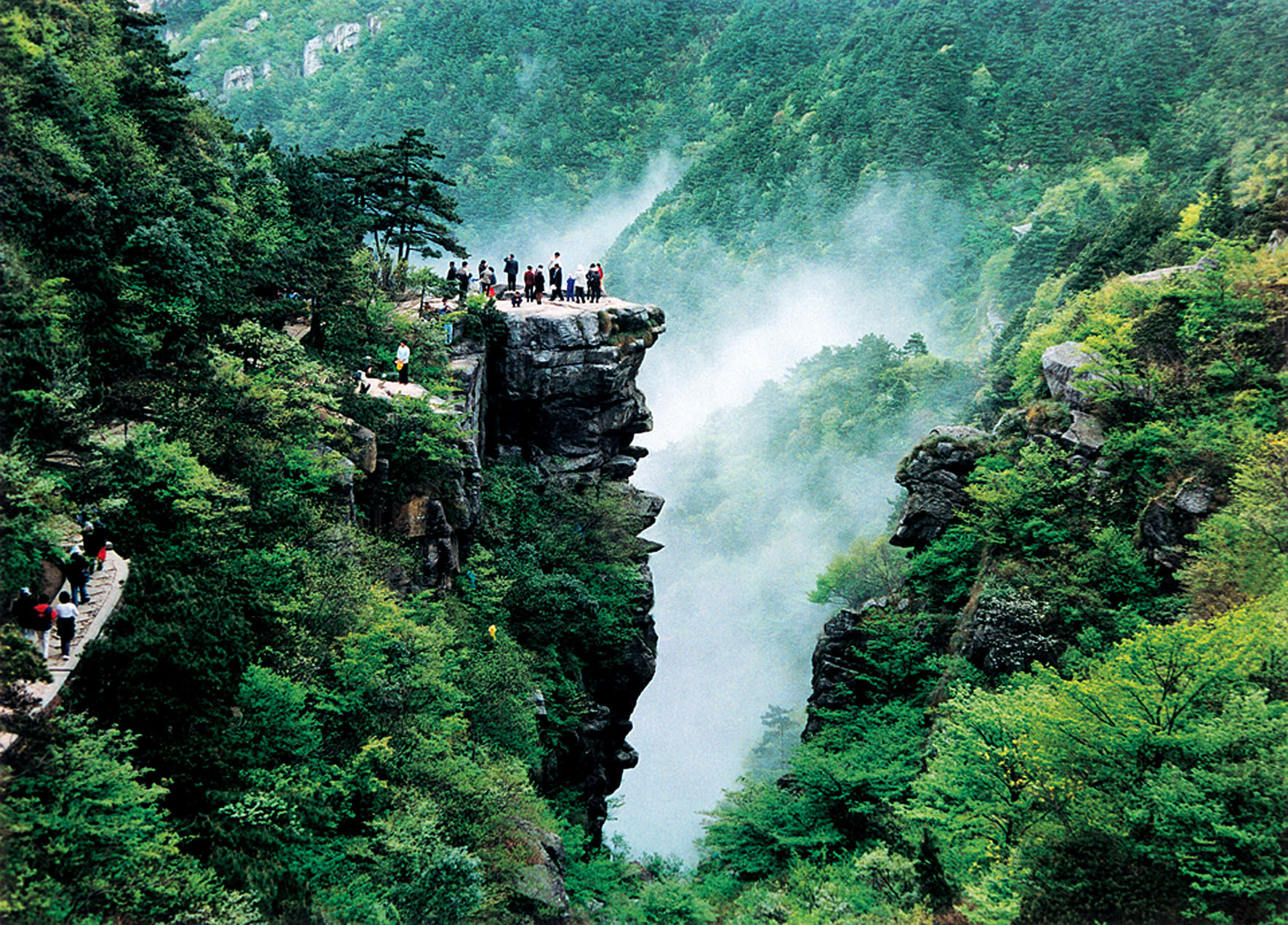
Day 4 Lushan - Jingdezhen (approximately 2 hours drive, 145 kilometers)
After breakfast, visit the "First Wonder of Lushan" - the Three-Tiered Waterfall (total visit approximately 3 hours). The Three-Tiered Waterfall, also known as the Level Three Spring, is the most magnificent and beautiful waterfall among many in Lushan, with a total drop of 155 meters. It is said that "if you haven't been to the Three-Tiered Waterfall, you haven't been to Lushan". After that, head to the thousand-year-old porcelain capital - Jingdezhen. Stay in Jingdezhen for 1 night.
Note: Although there is a sightseeing train in the scenic area, there are still quite a few long stairs to go down and up, so remember to bring drinking water, chocolate, etc., to replenish energy and conserve strength (over a thousand steps one way)!
Day 5 Jingdezhen - Wuyuan (approximately 1 hour 20 minutes drive, 84 kilometers)
After breakfast, visit the Jingdezhen Ceramic Museum, the first large-scale ceramic-themed art museum in China, officially opened in January 1954, covering an area of 1.2 hectares, with a building area of over 4500 square meters and an exhibition area of over 2500 square meters. It houses more than 20,000 ceramic masterpieces from different historical periods, providing the most reliable physical evidence for the study of ceramic history and culture. The Jingdezhen Ancient Kiln Folk Culture Expo Area (abbreviated as Jingdezhen Ancient Kiln) is a national 5A-level scenic area, a national cultural industry demonstration base, and a national intangible cultural heritage production protection demonstration base. It is the first choice for ceramic culture tourism in Jingdezhen, allowing you to deeply experience the profound history and culture of the porcelain capital. In the afternoon, visit the national 4A-level scenic area, the first ancient county government in Jiangnan - the Fuliang Ancient County Government (visit for about 1.5 hours), which includes a ceramic history and culture corridor, the main hall of the five-rank county government, a thousand-year-old porcelain altar, a thousand-year-old red pagoda, and an ancient official culture exhibition hall. Then head to the most beautiful village in China - Wuyuan. Stay in Wuyuan for 1 night.
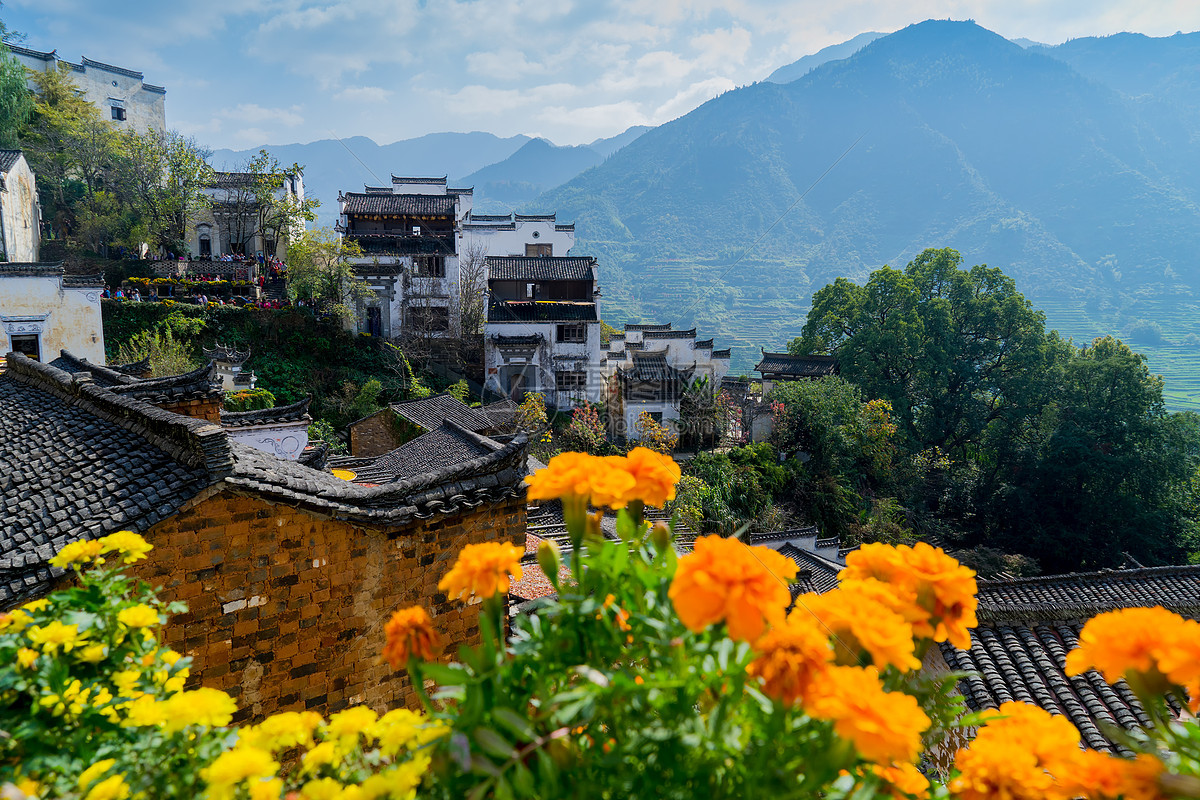
Day 6 Wuyuan - Sanqing Mountain (approximately 1.5 hours drive, 70 kilometers)
After breakfast, visit the most beautiful symbol of China, the Tiyun Village - Huangling Scenic Area, take the cable car up the mountain, enjoy the terraced flower sea from the sky, and enter the Tianjie, where the houses are arranged in a fan shape around the water, forming a U-shaped village that allows you to experience the "Potala Palace" of the south. The Hui-style shops are lined up, creating a moving abbreviated version of the "Along the River During the Qingming Festival". The Woyun Bridge, a suspension bridge, connects the flower sea on both sides, and is the largest panoramic suspension bridge in Jiangxi Province. The unique 24 solar terms walking path in the Baihua Valley allows you to experience the local atmosphere of Huizhou, with hundreds of ancient yew trees releasing unique negative oxygen ions. Every year in March and April, thousands of acres of rapeseed flowers bloom, and peach blossoms, pear blossoms, and rhododendrons compete for beauty, creating a scene of "the window framed by Huangling's thousand leaves, the door gathering the terraced flowers of ten thousand acres". After lunch, head to Wuyuan Ink Wash River, a scenic area featuring Huizhou and Gan culture, including rural teahouses, specialty dining, stylish bars, and traditional handicraft workshops, providing a high-quality leisure space for artists and tourists. After that, drive to the world natural heritage site - Sanqing Mountain. Stay at a hotel in Sanqing Mountain for 1 night.
Day 7 Sanqing Mountain - Wangxian Valley (approximately 1.5 hours drive, 70 kilometers)
After breakfast, head to the world natural heritage site - Sanqing Mountain, take the cable car up the mountain, and enjoy the magnificent sea of clouds at the Nanjing Garden Scenic Area (approximately 3 hours of sightseeing). This is the most extraordinary scenic area of Sanqing Mountain. Nanjing Garden showcases the granite peak landform features formed over 1.4 billion years of geological evolution, including the Immortal Pointing the Way, Goddess of Spring, Joyful Jade Girl, Giant Python Coming Out of the Mountain, Three Dragons Going to Sea, Raccoon Waiting for Mice, walking through the Rhododendron Valley, Young Monk Chanting, Penguin Offering Peaches, and Celestial Dog Gazing at the Moon, among others. Visit the Golden West Coast Scenic Area, which boasts four wonders: high-altitude plank road, sea of clouds, grand canyon, and ancient tree groves (approximately 1.5 hours of sightseeing), where you can see the Stone Man Carrying Pine, Guanyin Delivering Children, Mazu Navigating, Quiet Spring Harbor, Exploring Sea Cloud Pines, Beautiful Jade, West Sea Harbor, Echo Valley, and Monkey King Offering Treasures at Flower and Fruit Mountain. Explore the East Coast Scenic Area, including Qian Kun Platform and Fairy Bridge. In the afternoon, drive to the Wangxian Valley Scenic Area, visit the newly popular Douyin check-in spot, a national 4A scenic area - Wangxian Valley, which originated in the Eastern Han Dynasty and began in the Three Kingdoms period, covering 93 square kilometers, featuring canyons, giant peaks, giant rocks, streams and waterfalls, and high mountain clear streams, with picturesque landscapes; ancient villages, farming, blessings, Buddhism, folk customs, and historical culture are prominent, integrating the natural landscape of Lingshan with cultural landscapes. There is an ancient legend of "Hu Zu Yu Hua Deng Xian Gong" here, rich in natural treasures and human talents. Stay overnight in Wangxian Valley.
Note: Upon arriving at Wangxian Valley, self-driving cars must park in the parking lot outside the scenic area. A shuttle bus will be arranged to take guests and their luggage to the Wangxian Valley homestay located on the mountain. After checking in, everyone can freely explore the surroundings, which are very convenient for walking. On the second day, when leaving the hotel, the scenic area shuttle bus will again take guests and their luggage back to the parking lot.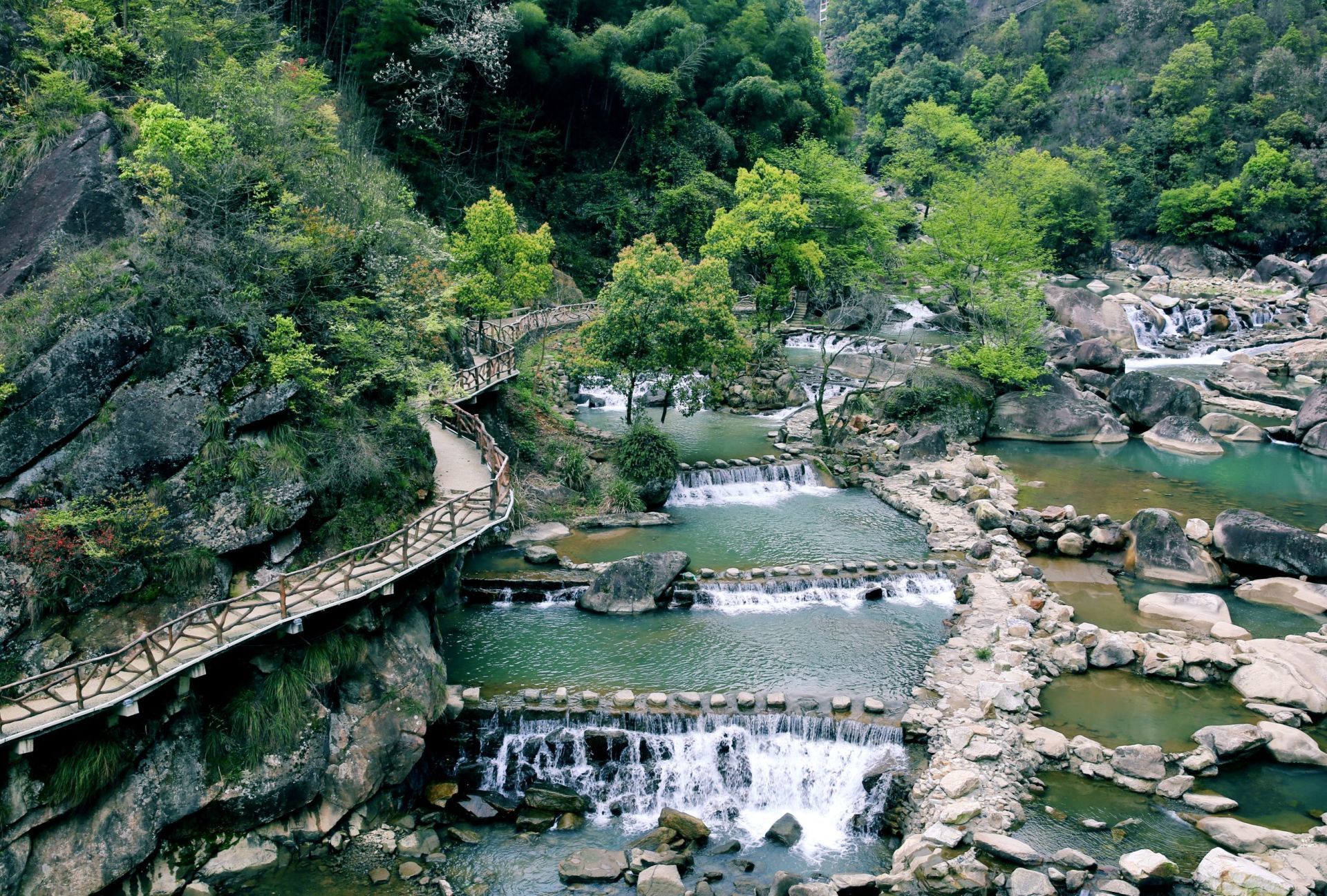
Day 8: Wangxian Valley - Longhu Mountain (approximately 3 hours drive, 200 kilometers)
After breakfast, continue exploring Wangxian Valley, visiting the Qingyun Bridge, a single-arch steel structure bridge with a span of 35 meters. Due to its small curvature, walking on it feels like walking on flat ground, and before you know it, you reach the top of the bridge, giving a sense of "walking on clouds". After crossing the Qingyun Bridge, step onto the Qingyun Ladder, and from then on, good fortune will follow. The Xunxian Road features both bluestone paths and canyon plank roads, following the natural terrain, winding and meandering through the Jiuniu Canyon. Along the plank road, you can hear the chirping of birds and the sound of flowing water, with different scenery in each season. The Corridor Bridge is a typical form of Jiangxi's wind and rain corridor bridge, using a beam-lifting structure, with beams resting on columns, layered and stacked all the way to the roof ridge, with a complex structure and craftsmanship. The Three Falls is where two streams converge, one originating from the Gaonan Peak and the other from the Xigao Peak, where you can see the unique cascading water scenery - the Three Falls. Baihe Cliff is said to be where Nuwa repaired the sky with colorful stones, and during the process, some stones fell, one of which landed in this place, creating the spiritual mountain. "A place's customs reflect its people," with its geographical location at the intersection of four provinces, the collision of Wu and Chu cultures, and the integration of immigrants from other places, the local folk culture is rich and colorful, including bridge lanterns, temple fairs, Nuo dance, board dragon lanterns, and rice customs. Afterward, drive to the sacred Taoist mountain - Longhu Mountain, originally named Yunjin Mountain, where it is said that Zhang Tianshi practiced alchemy during the mid-Eastern Han Dynasty, and the mountain got its name when the dragon and tiger appeared after the elixir was completed. Stay overnight at Longhu Mountain.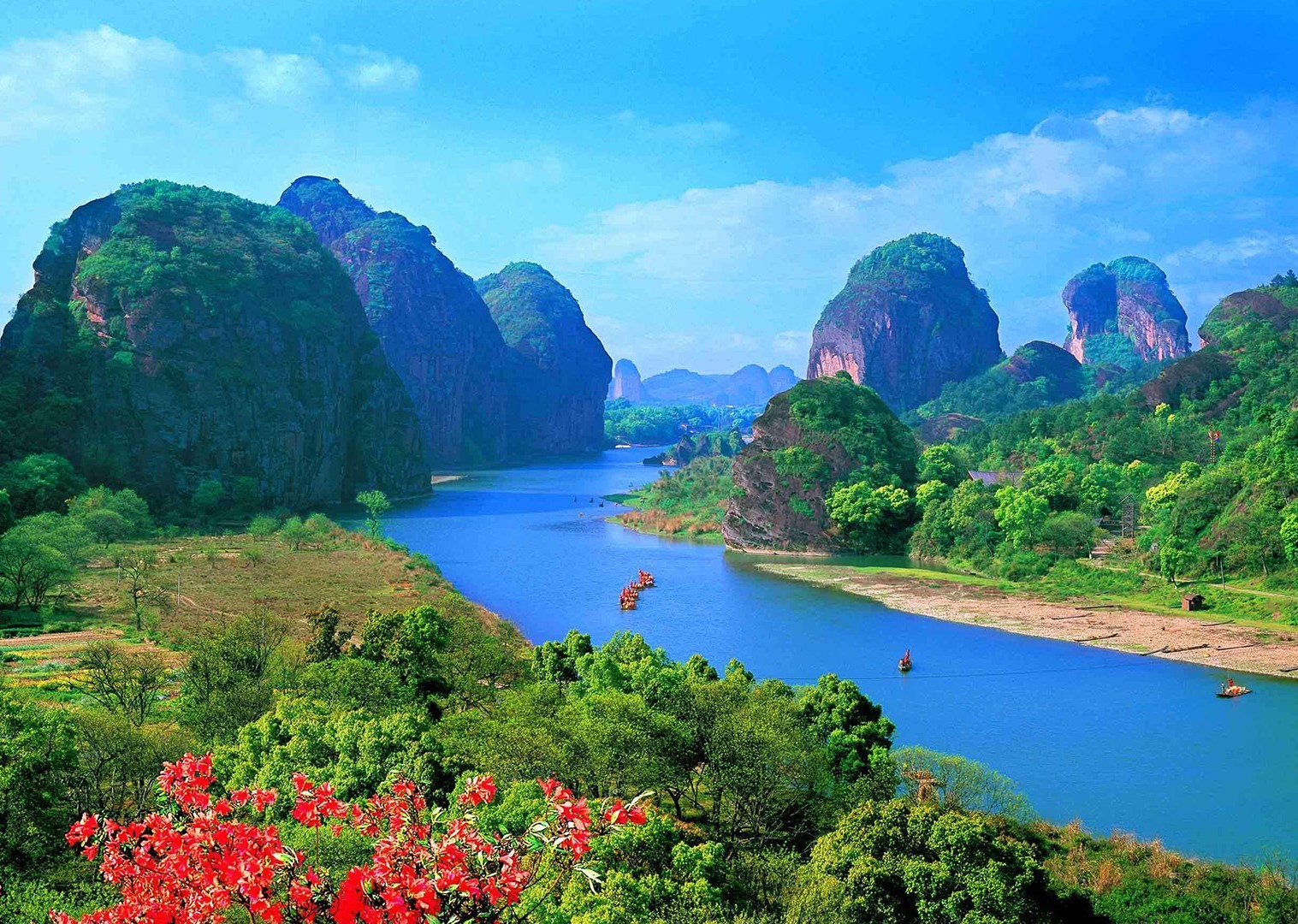
Day 9: Longhu Mountain - Nanchang (approximately 2.5 hours drive, 158 kilometers)
After breakfast, visit the ancestral home of Taoism, the Sihan Tianshi Mansion (Shangqing Ancient Town) (approximately 1 hour and 20 minutes of sightseeing), known as the North Confucius (Confucius) and South Zhang (Zhang Tianshi). It retains the traditional specifications of Chinese mansions while incorporating certain characteristics of feudal government offices, maintaining a distinct style of the Zhengyi sect of Taoism in its layout. Take a bamboo raft on the Luxi River, enjoying the ten must-see beautiful sceneries (a nun carrying a monk cannot walk, a fairy cannot pair, a lotus flower cannot wear, a fairy peach cannot eat, a dan spoon cannot use, a Taoist hall cannot sit, a cloud brocade cannot wear, a stone drum cannot strike, a sword stone cannot test, a jade comb cannot comb), and watch the thousand-year mystery of the Hanging Coffin Trial Performance (approximately 20 minutes). Cliff burial (hanging coffin burial) is a unique burial form of the ancient Yue people, and it is one of the oldest and most special burial forms in China, observing the group of peaks and other Danxia landforms. Visit the Elephant Trunk Hill Scenic Area (approximately 2 hours of sightseeing), where the peaks and cliffs are towering, red streams are rushing, red cliffs stand tall, green trees cover the area, hanging vines are cascading, and waterfalls are flying diagonally, showcasing the characteristics of wonder, danger, beauty, and tranquility, making it a rare collection of Danxia landform scenery and a place for scientific research and leisure. Then head to Nanchang. Stay in a hotel in Nanchang for 2 nights.
Day 10 (Tuesday): Nanchang
After breakfast, visit the Eight Great Mountain Man Memorial Hall, which is the earliest established memorial hall for ancient painters in China. The architectural style is simple and elegant, resembling the fish swimming under the brush of the Eight Great Mountain Man, seamlessly integrating with the Meihu Lake to the southwest, where land and water coexist, resembling a naturally formed "Taiji". The northern part is the exhibition hall of authentic works, displaying the life and true works of the Eight Great Mountain Man. In the afternoon, visit the August 1st Uprising Memorial Hall, the former site of the command center of the "August 1" Nanchang Uprising, which displays a large number of historical documents, charts, photos, cultural relics, and inscriptions from old comrades who participated in the Nanchang Uprising, vividly recreating the glorious historical chapter of the Nanchang Uprising. Afterward, head to the Tengwang Pavilion, climb the Tengwang Pavilion, which is known as one of the "Three Famous Towers in Jiangnan" along with the Yellow Crane Tower in Wuhan, Hubei, and the Yueyang Tower in Hunan, and enjoy the beautiful scenery described in the poem by the early Tang poet Wang Bo: "The setting sun and the lone wild goose fly together, the autumn waters and the long sky are one color."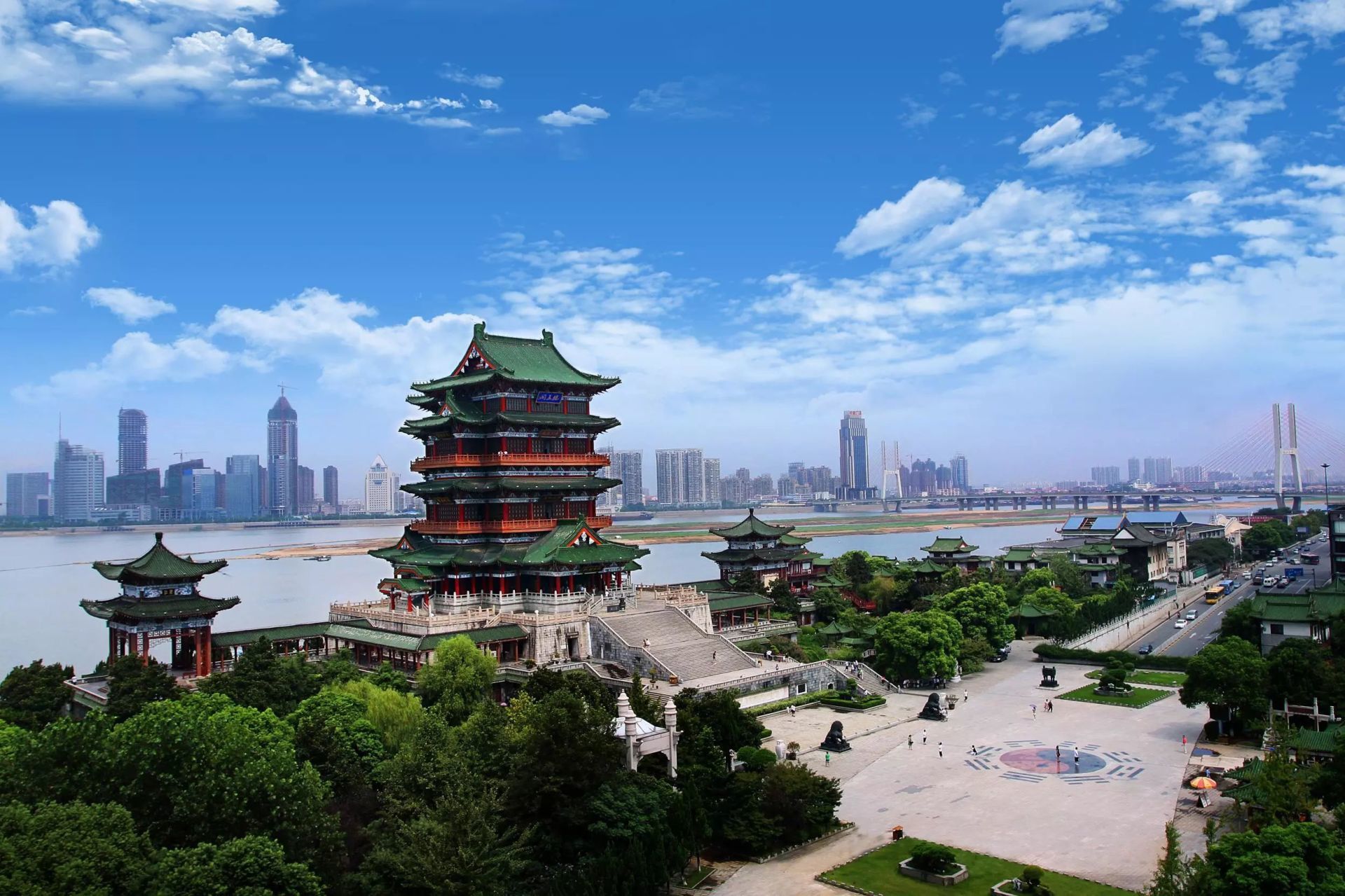
Day 11: Nanchang - Jinggangshan (approximately 4 hours drive, 331 kilometers)
After breakfast, head to Jinggangshan and take photos at the red flag landmark. Visit the Jinggangshan Revolutionary Museum (if closed due to policy, this itinerary will be canceled), which displays the establishment, development of the Jinggangshan revolutionary base, and images of the transfer of the main Red Army forces (tour lasts about 1 hour). Visit the stele forest (over 140 calligraphy steles), the sculpture park (composed of statues of 20 revolutionary figures from the Jinggangshan revolutionary struggle, such as Chairman Mao, Zhu De, He Zizhen, etc.), and the revolutionary monument, experiencing the reality of "the five hundred miles of Jinggangshan are all in sight, the flames of war from eighty years ago reappear before us." Visit the former residence of Comrade Mao Zedong at Ciping: On October 27, 1927, Mao Zedong led the autumn harvest uprising troops from the Xiang-Gan border to Ciping and lived here. For more than a year until January 1929, whenever Mao Zedong came to Ciping, he lived and worked in the middle hall and right rear room of this house. The reorganized Central Committee of the Communist Party of China Jinggangshan Front Committee was also located here on November 6, 1928. Stay at Jinggangshan Hotel for 1 night.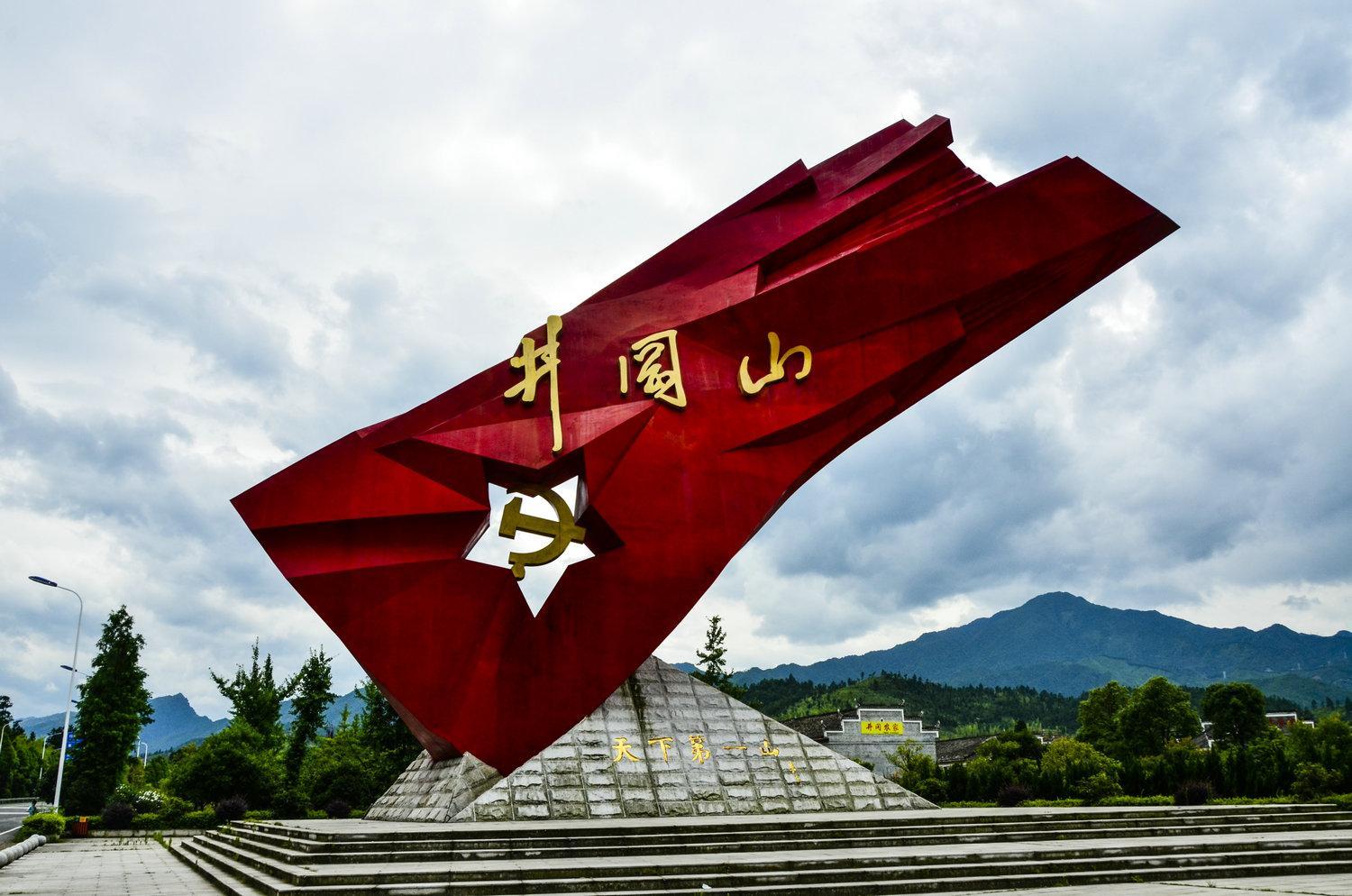
Day 12 Jinggangshan - Ganzhou (approximately 3 hours by car, 227 kilometers)
After breakfast, pay respects at the Beishan Martyrs Cemetery (if closed due to policy, this itinerary will be canceled), covering an area of over 400 acres, consisting of the Jinggangshan Revolutionary Martyrs Memorial Hall, Jinggangshan Stele Forest, Jinggangshan Sculpture Park, and Jinggangshan Revolutionary Martyrs Monument (tour lasts about 1 hour). Visit Huangyangjie, one of the five major outposts, where in August 1928, the enemy's fourth regiment attacked this area, and our troops had only one battalion, resulting in a famous battle of fewer against more. Chairman Mao specifically wrote "Xijiangyue. Jinggangshan" to commemorate this (tour lasts about 0.5 hours). The Baizhu Garden has over 120 species of bamboo. Its shapes vary from square to round, arc-shaped to spherical; bamboo poles have unique forms like tortoise shell, Buddha belly, Guanyin, and straight or curved; colors include purple, green, yellow, yellow with green, and green with yellow. Rare bamboo varieties include tortoise shell bamboo, Xiangfei bamboo, small Buddha belly bamboo, and chicken feather bamboo. Visit the Red Army Mint, which was announced as a "Chinese Workers' and Peasants' Red Army Site" by the Jinggangshan Municipal Government in September 1988, and is a municipal cultural relic protection unit. Visit the Xiaojing Red Army Hospital (tour lasts about 20 minutes), and explore the Wulongtan Waterfall Group, known for its deep canyons, steep peaks, lush forests, fragrant flowers, and numerous waterfalls (tour lasts about 1.5 hours). Afterwards, head to Ganzhou, known as the "Southern Song City." Stay at Ganzhou Hotel for 1 night.
Day 13 Ganzhou - Xinyang, passing through Xingguo (approximately 10 hours by car, 880 kilometers)
After breakfast, visit the ruins of the ancient city wall from the Song Dynasty, which began construction in the Han Dynasty and has a history of two thousand years. After continuous repairs and reinforcements over 900 years during the Southern Song, Yuan, Ming, Qing, and Republic of China periods, the city of Ganzhou formed a majestic city wall with a circumference of about 13 miles, reflecting the wisdom and advanced architectural skills of ancient Chinese laborers. Starting from the west gate of the Ganzhou ancient city wall, you can walk along the ancient city wall and see Yugu Tower, the former residence of Chiang Ching-kuo, Bajing Tower, Bajing Park, Guijiaowei (where Zhangshui and Gongshui converge), the ancient floating bridge, Shouliang Temple, Wenmiao, Zaor'xiang, and Dong's residence. In the afternoon, return from Ganzhou, with a brief stop in Xingguo to experience the charm of the "General County." Rest for a night in Xinyang, Henan. Stay at Xinyang Hotel for 1 night.
Day 14 Xinyang - Beijing (approximately 11 hours by car, 980 kilometers)
After breakfast, depart and arrive in Beijing in the evening, concluding a wonderful self-driving tour.

